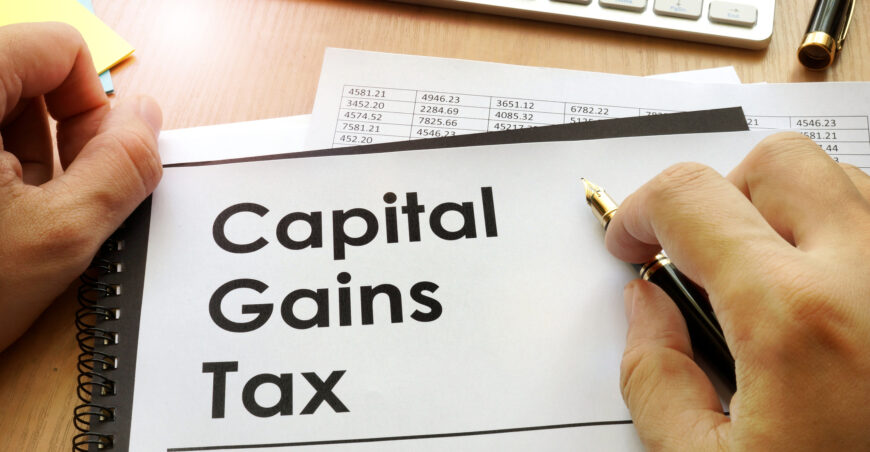Capital gains tax can significantly impact the profitability of your commercial real estate investments. In the world of commercial real estate investing, one of the most significant considerations is the tax implications that accompany the buying and selling of properties. Capital gains tax, in particular, can substantially impact your investment returns. However, savvy investors have a powerful tool at their disposal: the 1031 exchange. In this article, we’ll delve into the intricacies of capital gains tax, explore the concept of a 1031 exchange, and focus on strategic applications within the realm of commercial real estate.
Understanding Capital Gains Tax
Capital gains tax is a tax levied on the profits realized from the sale of an asset, such as real estate, stocks, or bonds. In the context of commercial real estate, it applies to the gains made from selling a property at a price higher than its original purchase price. The capital gains tax rate can vary based on factors such as your income level and how long you held the property before selling it.
For many investors, the prospect of paying a substantial portion of their profits in capital gains tax can be discouraging. This is where the 1031 exchange comes into play.
Exploring the 1031 Exchange
The 1031 exchange, also known as a like-kind exchange or a tax-deferred exchange, is a provision in the U.S. Internal Revenue Code that allows investors to defer capital gains tax on the sale of a property if they reinvest the proceeds into a similar property. Visit my previous article, Understanding Like-Kind in a 1031 Exchange to learn more. The underlying principle is to encourage reinvestment in the economy and prevent the immediate erosion of profits due to taxes.
In a 1031 exchange, the process involves selling your existing property (relinquished property) and then identifying and acquiring a replacement property of equal or greater value within a specified timeframe. By doing so, you can defer paying capital gains tax until you eventually sell the replacement property for cash.
Strategies for a Successful 1031 Exchange in Commercial Real Estate
- Strategic Property Identification: Identifying the right replacement property is crucial. Investors should consider the potential for rental income, location, market trends, and the property’s appreciation potential. Conduct thorough research and consult with real estate professionals to ensure that the replacement property aligns with your investment goals.
- Reverse 1031 Exchange: In a standard 1031 exchange, the investor sells the relinquished property before acquiring the replacement property. However, in a reverse 1031 exchange, an investor can acquire the replacement property first and then sell the relinquished property. This can be advantageous in a competitive market or when there’s a time-sensitive opportunity.
- Improvement and Value-Add Strategies: To maximize the benefits of a 1031 exchange, investors can identify replacement properties that require improvements or value-add initiatives. By enhancing the property’s value, investors set the stage for increased rental income and potential appreciation, resulting in a more lucrative investment over time.
- Diversification: Investors can use a 1031 exchange to diversify their portfolio. For instance, if you’re looking to move from one type of commercial property to another, such as transitioning from an office building to a retail center, a 1031 exchange can facilitate this shift without triggering immediate tax liabilities.
- Qualified Intermediary (QI): To ensure compliance with IRS regulations, investors must work with a qualified intermediary—a third party responsible for holding the sales proceeds and facilitating the exchange. The QI plays a critical role in guiding investors through the exchange process and ensuring all requirements are met.
- Mind the Timelines: The IRS sets strict timelines for completing a 1031 exchange. From the sale of the relinquished property, investors have 45 days to identify potential replacement properties and 180 days to close on one or more of those identified properties. Adhering to these timelines is essential to maintain the tax-deferred status of the exchange.
Capital gains tax can significantly impact the profitability of your commercial real estate investments. However, with the strategic implementation of a 1031 exchange, investors can navigate the tax landscape and defer the payment of taxes, allowing for the growth and compounding of wealth. To learn more about the benefits of a 1031 exchange, I encourage you to read 1031 Exchange Benefits article I previously wrote. You are also welcome to reach out to me directly to learn more about the strategies and timing of a 1031 exchange and also Sheila Long at Old Republic Exchange is a great resource. By understanding the intricacies of the process and employing strategic approaches, such as identifying valuable replacement properties and exploring improvement opportunities, investors can leverage the power of the 1031 exchange to their advantage. Always consult with tax professionals and real estate experts to tailor these strategies to your specific investment goals and financial situation, ensuring a successful and prosperous commercial real estate journey. The ICRE Investment team helps investors such as yourself, please visit our Investment Services page to learn more.
For More Information on a 1031 Exchange Contact:
 Sheila Long, CES®
Sheila Long, CES®
Vice President | Old Republic Exchange
Regional Sales Executive
C: (480) 341-2032
SheilaL@OldRepublicExchange.com
OldRepublicExchange.com
















